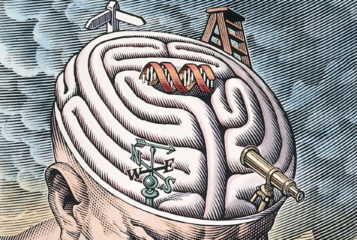Last year I wrote about the first group of clinicians in the UK to receive research ethics committee approval to proceed with a clinical trial of uterus transplants in ten patients (see BioNews 828).
I raised concerns then that women were putting themselves through difficult and intrusive procedures in order to experience pregnancy, when a viable alternative existed in the form of gestational surrogacy. This would have the same outcome as a uterus transplant – a genetically related child. I do not deny that surrogacy has its own problems that need to be overcome, but I question the need for women to go through multiple invasive operations, to take immunosuppressive drugs, as well as going through high-risk pregnancies, in order to pursue their aim of having a genetically related child.
So it was with concern that I read the news that the first uterus transplant in the US went ahead in February. The Cleveland Clinic performed the transplant on a 26-year-old woman, identified as Lindsey. According to the New York Times, Lindsey was born without a uterus and, although she and her husband Blake have three adopted sons, she is quoted as saying: 'I have prayed that God would allow me the opportunity to experience pregnancy, and here we are at the beginning of that journey.' In order for Lindsey to start the journey to experience pregnancy, she endured a nine-hour operation to transplant the uterus that had been donated from a recently deceased woman. Sadly for Lindsey and her family, the transplanted uterus failed a few days after transplantation and was removed.
I do wonder how much information potential recipients are given about the experience if a pregnancy is achieved with a donated uterus. (I am not suggesting that the women are unable to consent to their participation in the clinical trials – rather, I am curious about what information they are given, and how that is understood. I am certainly not claiming that any of the clinics involved in these clinical trials are acting improperly with regards to the consent procedure.)
The Cleveland Clinic demonstrates that the nerves of the uterus are not connected to the recipient's body, only the necessary blood supply. This raises questions about the way in which women will experience pregnancy as a result. As Catsanos et al note: 'For some potential recipients the lack of sensation and normal delivery could undermine their desire to experience pregnancy.'
The Cleveland Clinic have received ethical approval to conduct ten uterus transplants, and it is reported that Baylor University Medical Center at Dallas, Brigham and Women’s Hospital in Boston, and the University of Nebraska Medical Center in Omaha are also planning uterus transplants on an experimental basis.
The New York Times article detailing the Cleveland Clinic story states that 'medically, uterus transplants are a new frontier. Ethically, they reflect an increasing acceptance that transplants are justified not only to save lives, but to also improve the quality of life.' I do not deny that for women without wombs who desire a uterus transplant, and receive one as part of one of the clinical trials that are happening, may well argue that their quality of life has been improved through the ability to experience one or two pregnancies. However, I believe that we need to ask: at what cost?
The recipient of a donated uterus will be putting herself at physical risk, on multiple occasions and throughout any pregnancy. The initial transplant takes hours, and prolonged periods under anaesthesia carries its own risks. The physical toll upon the body that receives the transplant is one that takes time to recover from, and during the period that the donated uterus is in situ, the recipient must take immunosuppressant drugs to prevent rejection. These also carry health risks. If the recipient's body does not reject the donated uterus, she will then have the opportunity to carry up to two pregnancies. These are high-risk pregnancies that will be closely monitored, with the risk of rejection continuing throughout the pregnancy, followed by a Caesarean section, which also has inherent risks.
Finally, the recipient will be required to undergo a further operation to remove the donated uterus, and that will again take time to recover from. Women who receive a donated uterus will therefore go through up to four major operations, from which they will need time to recover, all while caring for themselves, their new babies and any previous children.
How does all of this improve quality of life? It may be argued that a face or hand transplant does improve the quality of life of the recipient. Although these are not life-saving measures, they do have an ongoing and (hopefully) life-long effect. But a uterus transplant may improve the quality of life for a relatively brief period of the recipient's life. It is a fleeting improvement (for the duration of time that the donated uterus is within the recipient's body and used for pregnancy) but for the recipient there may be ongoing effect in that she has been able to experience (in some way) pregnancy and have a longed for genetically related child.
As Catsanos et al have noted: 'Once we move away from evident improvements in function, such as occur with eye and kidney transplants, we must take careful account of what it is that motivates patients to undertake the risks of transplantation when the outcome is uncertain and the side effects of long-term immunosuppression onerous.' This is a debate that needs to happen now, before more women participate in clinical trials for uterus transplants and go through further experimental procedures.






Leave a Reply
You must be logged in to post a comment.